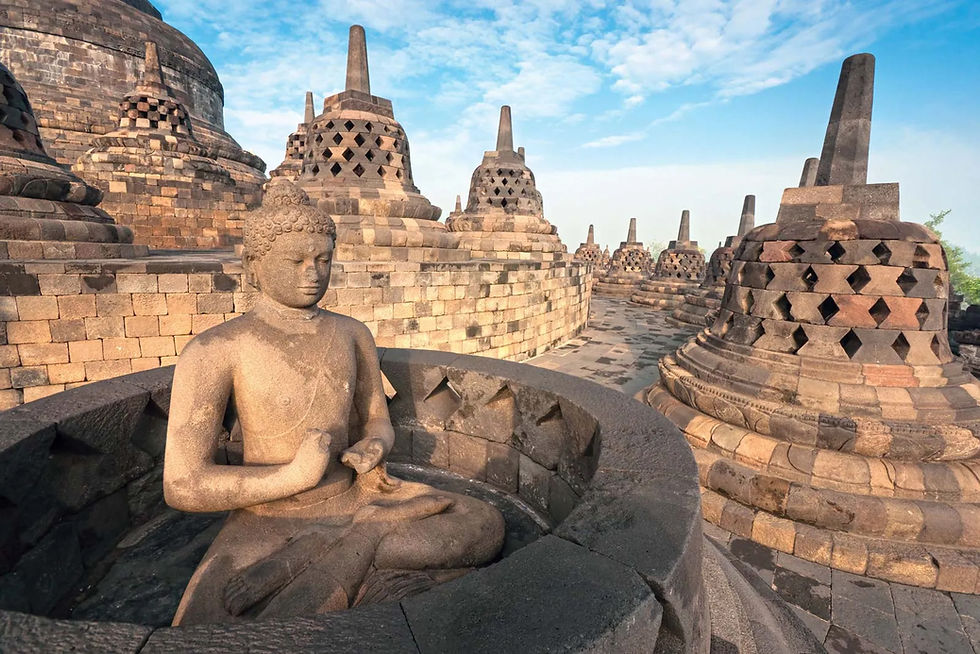7. Hinduism and Buddhism in South-East Asia
- Kerry Paul

- Apr 30
- 2 min read
Updated: Nov 7
How India shaped the world: I recently visited India to explore how this country evolved and what drives it today. In the 1,450 years from about 250 BC to 1200 AD (called The Common Period), the spread of Indian religion had a profound impact on South, Central, South-East, and Eastern Asia. Today, over half the world’s population lives in areas where Indian religious ideas are, or once were, dominant.

Hinduism and Buddhism in South-East Asia
Indian religions established a foothold in South-East Asia, with Buddhism arriving first in the first century CE, followed by Hinduism before the widespread adoption of Buddhism in the fourth century CE.
By the fifth century CE, Indian missionaries traveling to China converted many South-East Asians to Buddhism. Across the region, Hindu and Buddhist teachings, art, and architecture mixed freely. Under the influence of Indian merchants and missionaries, local people practiced a blend of Buddhism and Hinduism, while still preserving many of their indigenous beliefs and traditions.
A key example of this religious transition is Angkor Wat in Cambodia, originally built as a Hindu temple before later transforming into a Buddhist site when Buddhism became the dominant religion.

Two main Buddhist traditions emerged in South-East Asia:
Theravāda Buddhism became dominant in mainland regions like Thailand, Cambodia, Laos, and Myanmar.
Mahāyāna Buddhism spread primarily in northern Vietnam.
In some countries, Buddhism became more than just a religion—it evolved into a cultural identity, family tradition, and ethnic identity. For example, 95% of Sri Lankan Buddhists believe that being Buddhist is essential to being truly Sri Lankan.
Today, India’s religious influence is evident in:
Buddhism in Sri Lanka, Tibet, China, Korea, and Japan
Indian-origin place names in Myanmar and Thailand
Murals and sculptures in Laos and Cambodia
Hindu gods, rituals, and temples in Bali
These lasting influences highlight how Indian religious traditions shaped the cultural and spiritual landscape of South-East Asia.
Your next read in the series: 8. Hindu/Buddhist Places in South-East Asia






Comments